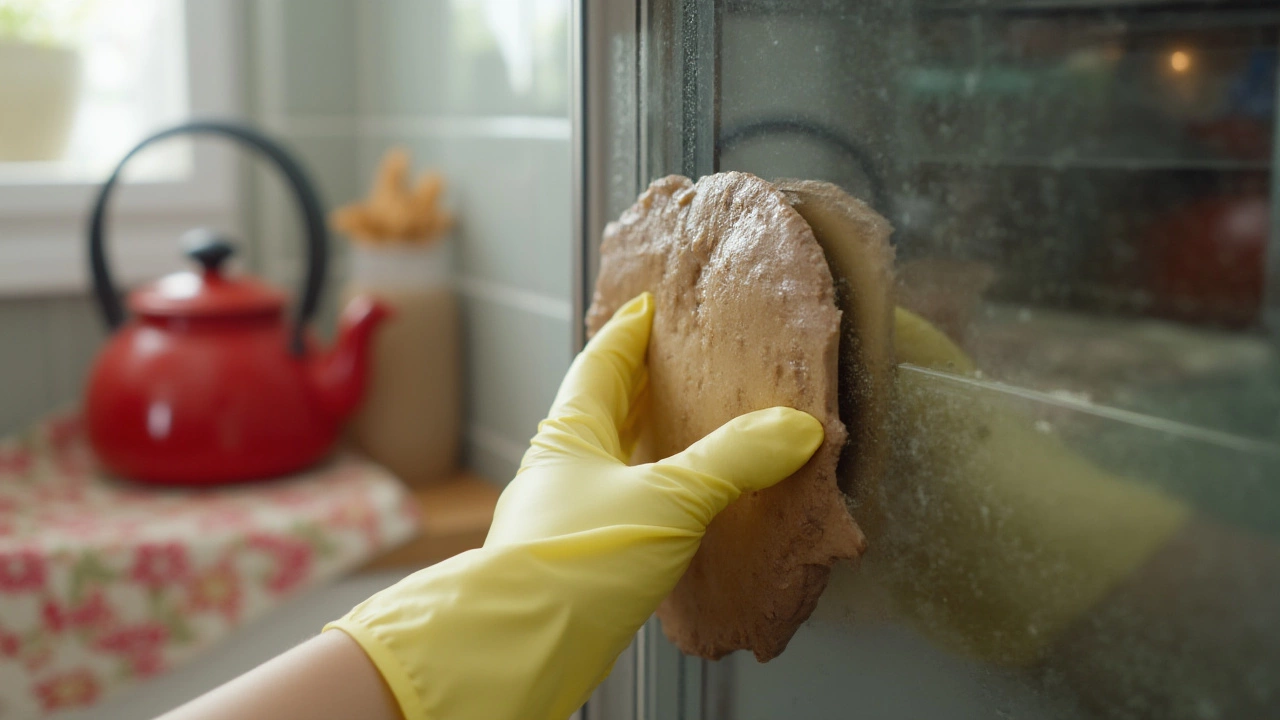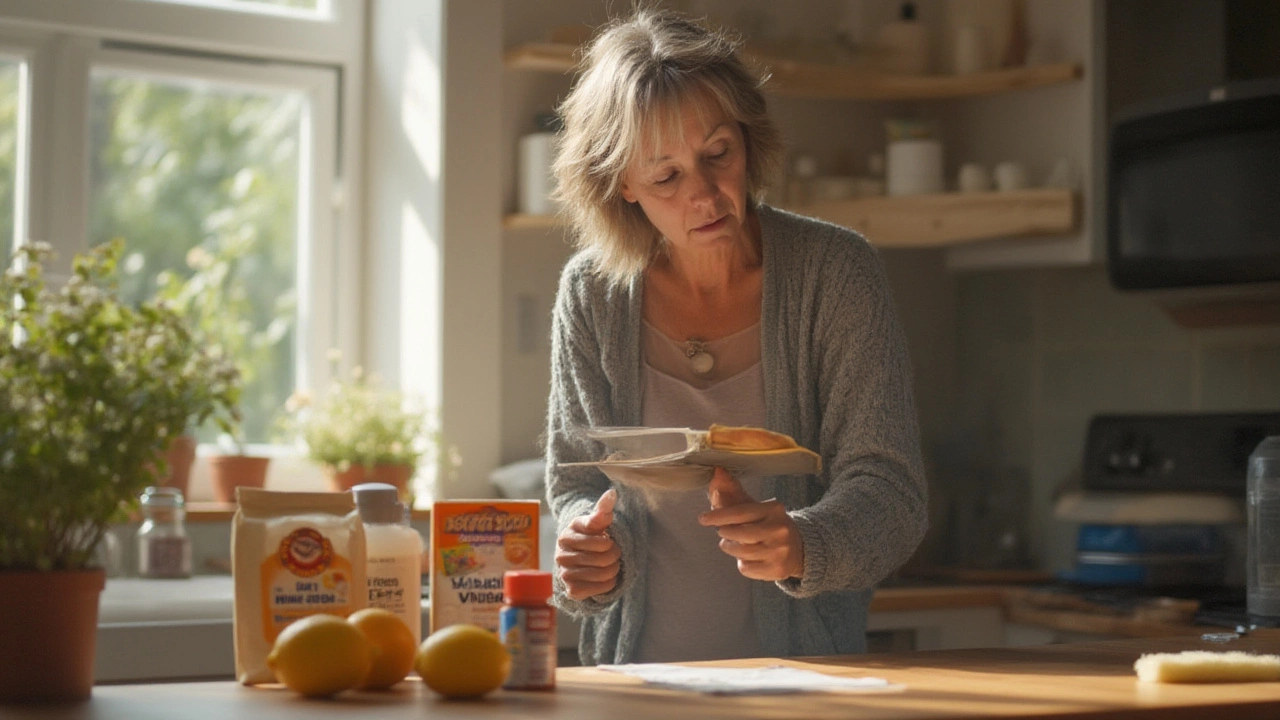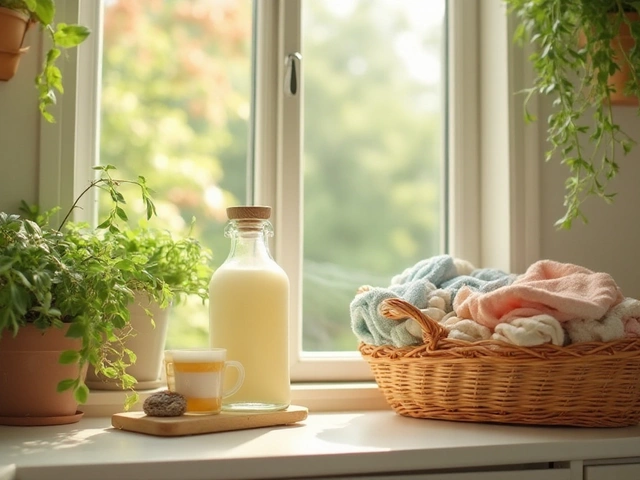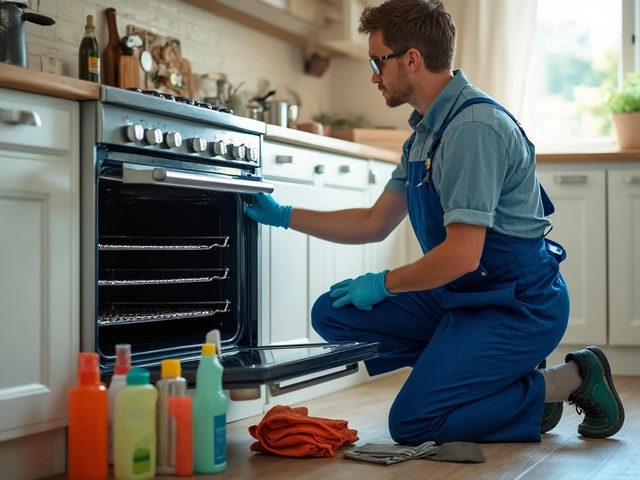Ever noticed how the glass oven door—meant to give you a peek at golden casseroles—just ends up showing off streaky, burnt-on brown stains? The kind of grime no paper towel or soapy sponge seems to touch. Your baked-on streaks laugh at you week after week, even when you’re armed with the newest cleaning spray. But here’s something a lot of people don’t realize: your glass oven door isn’t actually that tough to clean. Honestly, you don’t need toxic chemicals or a call to a professional. The real secret is technique, a bit of patience, and the right everyday stuff you probably already have sitting in your kitchen.
Why Does the Glass Oven Door Get Brown Stains?
Before grabbing your cleaning arsenal, it helps to know why these brown stains seem so persistent. Every time you roast veggies or bake lasagna, tiny food particles, fats, oil, and sugar melt and splatter. When your oven door heats up to 400°F (204°C), those little bits don’t just sit there—they caramelize and stick onto the glass like glue. If you forget to wipe it down between uses, the spots keep building up, layer on layer. After a month or two, you’ve got that dark, baked-on crust that shrugs off basic cleaning.
According to a 2023 report by Cleaning Science Magazine, oven glass is made to resist thermal shock and temperature change, but it’s not immune to chemical change. The brown stains aren’t just grease—they’re literally cooked on and bonded at a molecular level. That’s what makes the stains tricky—not just surface dirt but a blend of carbonized food, sugar, and fat.
The way modern ovens are sealed makes it even trickier. Many ovens are built so air can get trapped inside—not ideal if you accidentally spill something sweet. That spill might slide between the glass layers, causing stains you can’t reach from the outside. You’ll also notice brown streaks are always worse at the bottom of the glass, where drips and splatters settle. You’re not alone if you feel like your oven hates you—statistically, nearly 60% of home cooks surveyed by Housekeeping Institute cited oven glass cleaning as their “most disliked kitchen chore.” There’s no myth here: if you skip cleaning your oven door for just a couple of uses, the stains ramp up fast.
What Really Works: Best Household Methods
You don’t need expensive specialty cleaners to get rid of brown stains on your oven door. Most home experts point to a shortlist of classic fixes, and the good news is you probably have what you need already. Let’s break down the best home remedies, so you don’t waste time on myths or overpriced sprays.
The main three contenders: baking soda, vinegar, and dish soap. Baking soda is the favorite—its gentle abrasiveness lifts burnt-on gunk without scratching the glass. Vinegar helps dissolve minerals and degrease and cuts through leftover residue. Dish soap, believe it or not, can help break down grease, especially when teamed up with hot water. Some people also swear by Magic Erasers (melamine foam pads), but use those sparingly—they can scratch if you’re too aggressive.
- Baking soda and water: Mix half a cup of baking soda with just enough warm water to make a spreadable paste. Smear it over the glass and leave it for at least 20 minutes—up to overnight for really bad stains.
- Spritz with vinegar: After letting the paste sit, spray white vinegar on top. It’ll fizz up, helping loosen more grime.
- Scrape gently: Use a plastic spatula or old credit card to lift off the buildup—avoid metal, which can scratch.
- Wipe and rinse: A clean, damp cloth should take off the loosened residue. If you still see some stains, repeat the process.
- Tough spots: If there are stubborn spots, try a non-scratch scouring pad dampened with a little dish soap.
If you’ve got stains between the glass panels, things get trickier. Many oven doors have a removable outer pane—look for screws underneath or along the sides. If you’re handy, unscrew and carefully wipe the inner glass. Not sure? Check your manual—some doors just lift off their hinges, giving you better access. Just be careful; broken oven doors aren’t cheap.
“There’s no special secret to getting a glass oven door clean—just the right materials, and the willingness to wait a little while for them to work.” — Judith Neumann, Cleaning Science Magazine
One trick you can borrow: start cleaning when the oven is just warm (not hot!), which softens tough residue. A lemon, sliced and microwaved in water for a minute, can also make a great natural degreaser if you’re sensitive to artificial smells. Just rub half a lemon directly on the glass, then wipe down.

Common Mistakes and How to Avoid Them
Shortcuts often mean extra work down the road. A lot of people fall into the same traps—using sharp blades, overly harsh cleaners, or skipping that important pre-soak. Here’s what not to do if you want your glass oven door to look clear and streak-free.
- Don’t use metal scrapers or steel wool. It’s tempting, especially when nothing else seems to touch that brown patch at the edge. But those tools will leave scratches that catch grime, making future stains appear even faster.
- Avoid oven cleaners on glass unless the manufacturer says it’s okay. Some industrial oven sprays contain lye or ammonia—harsh chemicals that can etch oven glass or damage the door’s seal. Check the manual for your exact oven model.
- Never clean a hot oven door. Wait until it’s barely warm, but not cold—heat can make cleaning easier, but hot glass paired with liquids can crack, and sudden temperature changes are bad news.
- If you don’t let the baking soda paste sit long enough, you’re really just moving the dirt around. The contact time is what breaks down that bonded gunk.
- Skip the window sprays. They’re not made for food residue and often leave behind their own film—making things look worse under the next kitchen light.
- Don’t drench the oven door’s seals with liquid. The seals can swell, warp, or stop working, letting more dirt inside. Use damp, not soaking-wet, cloths.
It’s not just about what you do, but how often. A quick wipe after each oven use will save you tons of time scrubbing. Study data from the European Home Sanitation Group showed that home cooks who wiped the glass weekly had 90% fewer visible stains after six months than those who left it for a month at a time.
Here’s a quick reference table with tips and common pitfalls:
| Method | What Works | What Fails |
|---|---|---|
| Baking soda paste | Gentle, safe for glass | Doesn’t work if not left long enough |
| Vinegar spray | Dissolves buildup | Can damage seals if overused |
| Dish soap | Breaks down grease | Ineffective on heavy carbonization |
| Magic Eraser | Removes streaks | May create scratches if used aggressively |
| Oven cleaner sprays | Works if manufacturer says it’s OK | May damage glass or seals if misused |
Prevention and Keeping Your Oven Door Spotless
If you’ve just spent the better part of an hour tackling brown stains, you probably want to avoid repeating this anytime soon. Luckily, keeping the oven glass clear is mostly about little habits—not major elbow grease every time you cook.
- Wipe spills quickly – right after cooking, once the oven is cool enough to touch, a simple wipe with a damp microfiber cloth makes a huge difference. The fresher the mess, the less likely it will bake on.
- Cover your dishes – whenever you bake something splattery (like lasagna), loosely cover the top with foil. This cuts down on the amount of stuff that can hit the glass.
- Line the bottom – you can buy oven-safe mats or use an old baking tray to catch drips. Just be careful not to block any vents.
- Use steam for regular upkeep – a small oven-safe dish of water, left to steam inside a hot (but turned off) oven, helps loosen dirt so you can wipe more easily.
- Choose the right cleaners – natural substances like baking soda, lemon juice, and diluted vinegar are strong enough for regular cleaning but gentle on the glass.
- Check your oven manual – some doors detach for easy cleaning. Don’t be shy about taking the door off for deep cleaning once in a while.
For those curious about going eco-friendly, every major cleaning association agrees: baking soda and vinegar, used in moderation, are as effective as store-bought chemicals for most glass oven doors. They’re cheap and don’t leave behind the nasty fumes that can linger for hours.
Finally, don’t let pride or embarrassment keep you from tackling those baked-on brown stains. Even the best cooks, and the most meticulous bakers, deal with the same mess. It’s practically a kitchen badge of honor. But the next time you open that oven door, let it show off your food—rather than the ghosts of dinners past.





